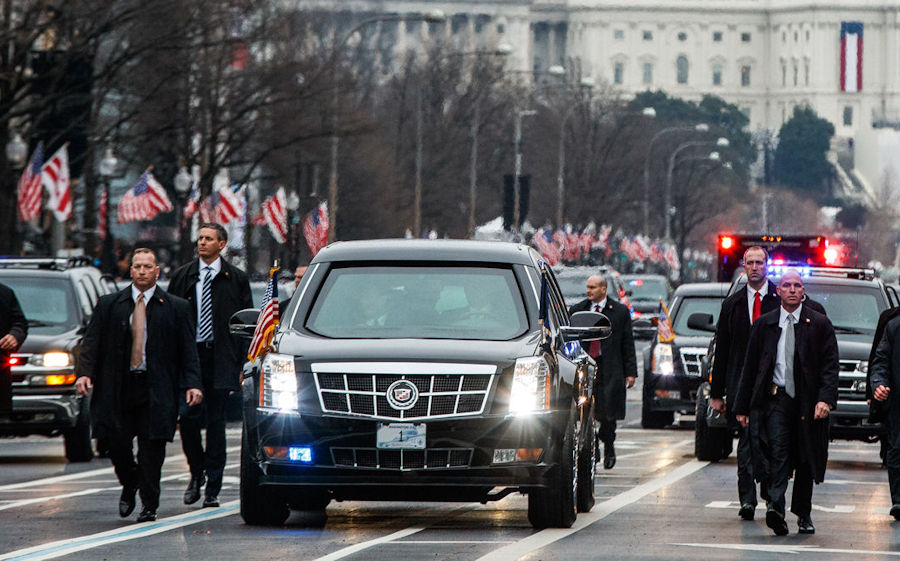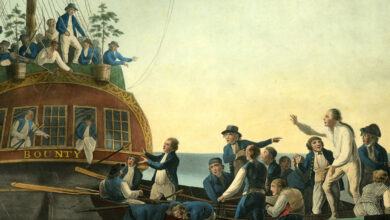
Podcast: Play in new window | Download
Currently sitting under the Department of Homeland Security, the United States Secret Service now performs duties that are far removed from its original purpose.
During the latter half of the 19th century, approximately 35% of all currency in circulation in the United States was counterfeit. The government wanted to do something about the problem and so legislation was prepared for President Abraham Lincoln to sign that would enable the federal government to form a department to address the issue. This legislation was on the president’s desk on 15 April 1865, the night Lincoln was assassinated.
Even so, the Secret Service Division of the United States Treasury Department was formed in Washington D.C. on 5 July 1865 with the Secretary of the Treasury Hugh McCulloch swearing-in William P. Wood as its first chief and presenting him with a clear objective of suppressing counterfeit currency operations within the United States.
At its inception, the Secret Service became only the fifth federal law enforcement agency in existence at the time, with the others being the United States Marshals Service, the Office of Instructions and Mail Depredations within the U.S. Post Office Department, which became the United States Postal Inspection Service, the United States Park Police and the United States Customs Service.
Although its initial mission was the suppression of counterfeit currency operations, it wouldn’t be long before the Secret Service started to investigate other crimes, including bank robberies and even murder, mainly as a result of a lack of manpower in other services, particularly within the Marshals Service.
After the Secret Service had been operating for about 35 years, it added another string to its bow, which became the main mission that the service is known for today, when, after President William McKinley was assassinated by a gunman at the Pan-American Exposition in Buffalo, New York in September 1901, the Secret Service was asked by Congress to take on the role of presidential protection. The Secret Service took on the full-time role of presidential protection in 1902 and has provided the service to U.S. presidents ever since.
In its presidential protection role, the Secret Service has had some notable successes, some near misses and at least one spectacular failure. The first of several near misses came soon after it took on the presidential protection role when a man was captured and disarmed very close to President William H. Taft in El Paso, Texas in 1909.
The second near-miss also saw the first and to date only, death of a secret service agent during an assassination attempt when Private Leslie Coffelt was shot three times in the chest with a Luger pistol during an attempt on the life of President Harry S. Truman in Washington D.C. in 1950. Although mortally wounded, Coffelt managed to return fire, killing one of the would-be assassins.
And, on 30 March 1981, Special Agent Tim McCarthy took a bullet in the abdomen whilst protecting President Ronald Reagan who was also shot and wounded in an assassination attempt by John Hinckley Jr in Washington D.C. Fortunately, both the President and Agent McCarthy made a full recovery.
Of course, the spectacular failure came on 22 November 1963, when President John F. Kennedy was assassinated by Lee Harvey Oswald in Dallas Texas.
The scope of the protection role that the Secret Service provides was expanded following the assassination of Senator Robert F. Kennedy in 1968 to include the protection of presidential and vice-presidential candidates and nominees.
Although the protection of the president and his or her family and other high ranking officials within the U.S. government is the most visible of the duties of the United States Secret Service, it still stands out as a bit of an oddity on the list of its official duties.
Since its inception, the Secret Service has continued its original mission of suppressing counterfeit currency operations and in 1984, the Comprehensive Crime Control Act saw these duties expand to include credit card fraud and computer fraud.
On 26 October 2001, President George W. Bush expanded the Secret Service’s remit even further by instructing it to put together a nationwide network of electronic crimes task force’s, (ECTF)’s to combat, among other things, any activity where new technology is used as a means to commit a crime. These activities can include anything from computer-generated counterfeit currency to computer system intrusions and from internet-related child exploitation to identity theft. Shortly after this role expansion, on 1 March 2003, the Secret Service moved away from the Treasury Department and began working under the direction and control of the Department of Homeland Security which had been formed in November the previous year.
In 2009, this network of ECTF’s expanded for the first time outside the borders of the United States when the first European Electronic Crime Task Force was formed in Italy through a memorandum of understanding with the Italian police and postal officials. A second European ECTF was formed in the United Kingdom on 9 August 2010. Both of these task forces are said to concentrate most of their efforts on computer-based criminal activity, including identity theft and other computer-related impacts of a financial nature or that affect critical infrastructure. As of 2010, the Secret Service employed over 6500 people, with some 3200 of them being Special Agents. It continues to provide a presidential protection detail as well as investigate financial crime, cybercrime and any other crime that falls under the jurisdiction of Homeland Security.
Podcast: Play in new window | Download





